|

Oldonyo Lengai Volcano, Tanzania.
Volcanic eruptions - Part 4
|
Oldonyo Lengai (2960 m/9,711') is an unusual volcano, located in one of Africa's great rift valleys, in northernmost Tanzania not far from Lake Natron and Kenyan border. Its lava is different in chemical composition from all other active volcanoes on our planet: it contains sodium carbonate. It flows at temperatures just above 500C, so moving flows look black or grey rather than red. Oldonyo Lengai also emits a lot of carbon dioxide. Climbing the mountain at night, you can see faint CO2 fog rolling downhill in the moonlight. During the day it is invisible, but still makes hiking up very difficult.
|
 |
| Lesser flamingos (Phoenicopterus minor), Lake Natron. |
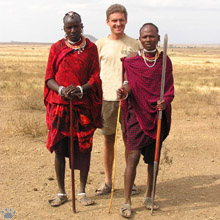
Maasai tribespeople, Oldonyo Lengai. |
The mountain can be reached by a very dusty half-day drive from Arusha. It is sacred for local Maasai people, and a major source of income for them: they charge visitors for passing through, for climbing, camping, and so on. |
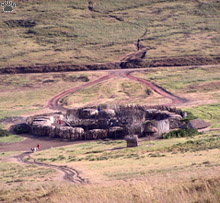
Maasai boma (fenced village), Oldonyo Lengai. |
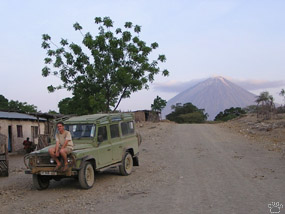
The road to Oldonyo Lengai is 4WD-only, even during the dry season. |

Thompson's gazelles (Gazella thompsonii), Oldonyo Lengai. |
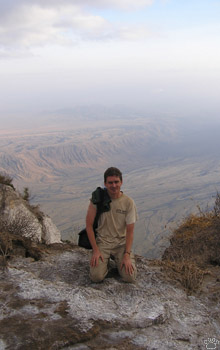
View of the Rift Valley, Oldonyo Lengai. |
It takes 6 hours to climb to the active crater, and 20 more minutes to reach the summit crater, where you can camp. The slopes are very steep and hot, so it's better to climb at night - make sure there's enough moonlight on your chosen date! From the summit, you can enjoy great views of the Rift Valley, Crater Highlands, and Lake Natron. |

Steam rising from the crater rim, Oldonyo Lengai. |
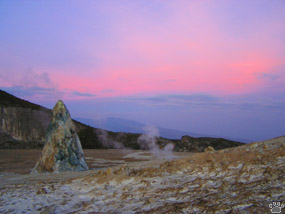
Dawn over the active crater. |
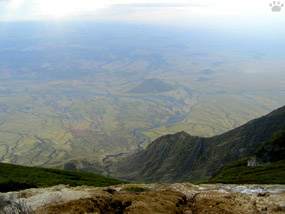
View down the summit trail. |

Walking across the crater, Oldonyo Lengai. |
The active crater was once deep, but now it's a flat area, covered with layers of fresh lava. It's mostly crusted over and safe to walk on, but some places are hot - comes handy if you have to wait for dawn. Its most striking feature is about a dozen of weird cones 1-50 m tall. Only 2-3 cones are usually active. |
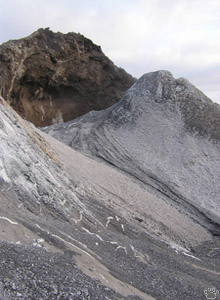
Some cones have their own craters. |
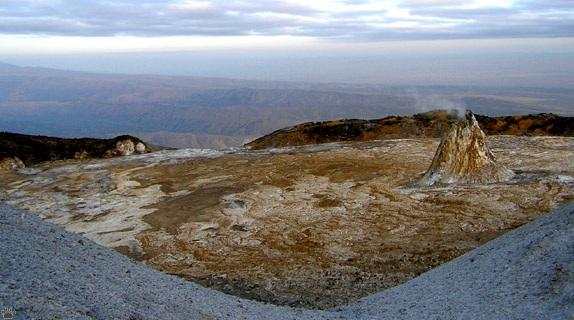 |
| Views from cones look strikingly similar to images sent by spacecraft from Venus and Titan. |
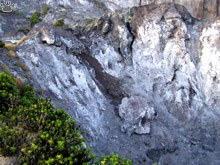
Explosion crater, Oldonyo Lengai. |
There are also small explosion craters, hot gas vents, and, if you are lucky, a moving lava flow or a pool of bubbling, faintly glowing black lava inside one of the cones. |

Hot gas vents. |
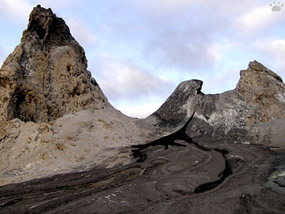
Active lava flow, Oldonyo Lengai. |

Lava bubbles inside a cone, Oldonyo Lengai. |

Klippspringer (Oreotragus oreotragus),
Oldonyo Lengai. |
On your way back from the crater, look for beautiful small antelopes called clippspringers, and for marmot-like creatures called rock hyraxes. Both species are adapted to life among steep unstable slopes, cold rocks, and hot gas vents - just as you should be if you are seriously interested in volcanoes. |

African rock hyrax (Procavia capensis),
Oldonyo Lengai. |
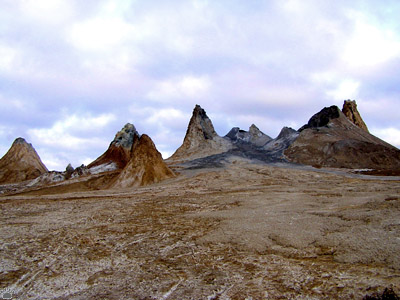
Inside the active crater, Oldonyo Lengai.
Back to Part 3
Home
|

